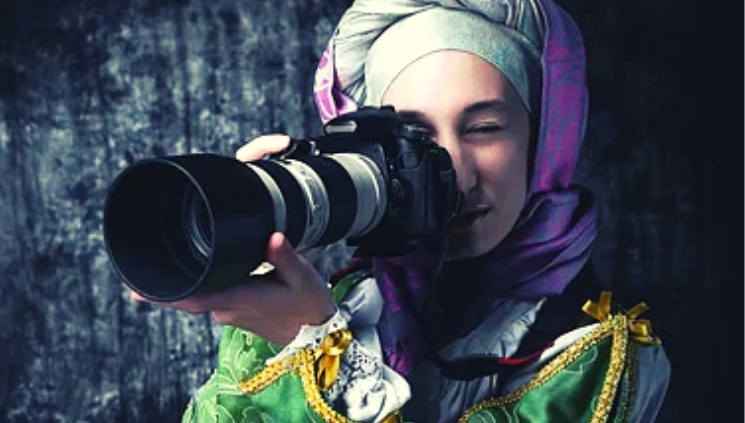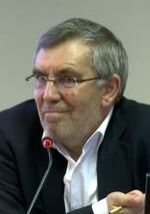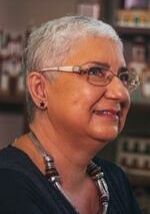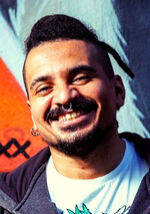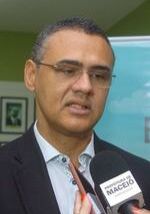Dialogues in practice – Brenda Kerolle’s review of Dictionary of History Teaching, organized by Marieta de Moraes Ferreira and Margarida Maria Dias de Oliveira
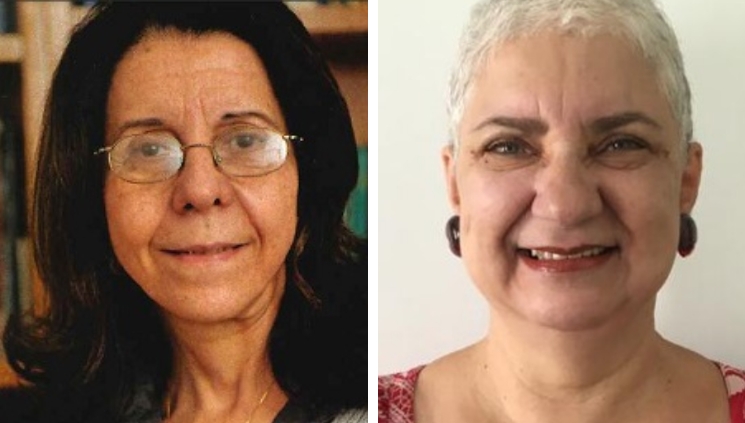
Marieta de Moraes Ferreira and Margarida Maria Dias de Oliveira | Fotos: IH/UFRJ/SIGAA/UFRN
Abstract: The Dicionário de Ensino de História covers a wide range of topics related to history teaching, including chronological, thematic and local history, as well as teaching and learning methods, curriculum policies and guidelines, heritage education and emerging technologies. Other topics include historical culture, disciplinary codes, stereotypes, sources, and historical narratives. The book also explores topics such as change and permanence, historical awareness, cause and effect, and the progression of historical knowledge. The volume includes contributions from a wide variety of authors as well as coordinators who helped organize the work.
Keywords: History Teaching, Dictionary, History Teacher Training.
The Dicionário de Ensino de História appears with the intention of subsidizing researchers and teachers in their practices related to the historical field. It presents a collection of entries chosen from three dimensions: relations with theory, methods and historiography; dialogue and production related to the curriculum; and the actions, activities and knowledge related to learning.
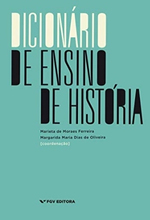
The work was conceived through the visualization of the need for this basic knowledge by researchers in the Professional Master’s program in History Teaching (ProfHistória), with the objective of functioning as a support for these professors inserted in the postgraduate course.
The selection of entries was not carried out randomly, nor without historical methodological foundation, however it is important to point out that when choosing those who would compose the book, some were not completed at this time. In the first pages of the book, still in the presentation, the organizers highlight the establishment of the aforementioned dimensions and the discursive characters that provided the criteria for the selection and organization of the entries, including their alphabetical order of exposure.
In general, the authors present the entries individually or in pairs, as in the cases of “Change and permanence” and “Cause and consequence”. We can see that the construction of the concept does not follow a single theoretical aspect that identifies the various epistemological foundations of the author. This multiplicity has a very positive effect on the construction of dictionaries, enabling the identification of dialogues between different theoretical perspectives. In addition, we found that many concepts are presented from a historical perspective, showing how they were thought along different epistemological matrices and considering current debates.
Thus, in addition to being an instrument for reflection on the construction of knowledge related to History Teaching, this dictionary provides a specific way of thinking about the History of History Teaching and, more generally, about the History of Brazilian education. The authors’ approach shows how the school’s historical knowledge was conceived in different historical moments.
Bearing in mind the character of massive composition that comes with a dictionary, the proposal established in the book is transfigured by another formation when systematizing the entries. Therefore, I understand that the existence of a writing focused not only on the epistemological basis of the word provides greater fluidity in reading and understanding for use in everyday school and research.
As a collective work, the book is written with different styles, bringing more richness in its composition, presenting a clear and rich dialogue between Pedagogy and History Teaching. As a science, History changes from different perspectives, its teaching as a discipline must be oriented and reoriented towards the understanding of the human being as a historical and social being that creates, consumes and changes visions. Therefore, the existence (not of just one dictionary, but) of dictionaries that are reformulated from time to time according to History is extremely important to give meaning to teaching practices in History.
In the work it is possible to see the emphasis on school subjects, especially in History Teaching, the different perspectives in accordance with the differentiation of the public and its socio-cultural needs. This alters the purposes of his teaching. In general, we understand that the work is in line with most of the Brazilian curricular proposals for the Teaching of History, which aim at the formation of critical thinking and the search for the identification of the student as a historical being.
The objective of History as a discipline may be to allow students to become subjects of their own History and to favor the understanding of the context in which they are inserted. In addition to pragmatic teaching, it deals with issues that sensitize people to create social changes, for example, identity issues added to History Teaching, which can lead to self-knowledge and the reinforcement of the feeling of belonging. In this way, the entries facilitate a broader understanding of teaching and a better knowledge of History as a developer of educational potential.
Although the construction is unique to each author, in general the work is possible to observe two large groups: those who base the concepts with an epistemological focus and those who dialogue about the criticality/applicability of such notes.
The entries align perceptions about basic ideas for the daily life of the History teacher in the classroom with the ideas of events, learning and anachronism.
Anachronism | Imagem: DepositoPhotos.Com
They also discuss practices such as curriculum, didactics, historical knowledge. They compose, as we have already pointed out, a union of theoretical-methodological views with perspectives of the pedagogical practice in the Teaching of History by the teacher educator.
In addition to the concepts, the authors draw attention to some basic concepts of historical research, such as: events are created by historians according to a constructed historical narrative; anachronism is one of the biggest mistakes a historian can make; historical knowledge comes from the present; importance of the historical record and the method of analysis; and historical interpretations always involve choices and forgettings.
The debate that takes place throughout the book, based on academic and tacit concepts and procedures, is important for the professional development of researchers who aim to pursue postgraduate studies. It is also possible to see the applicability of the book for postgraduate professors, as well as for those who are in the classroom or starting their undergraduate studies.
Finally, I can say that the dictionary presented here makes it possible to understand History Teaching as an object of research and a field situated between the other fields of History and education. The book offers basic concepts to all researchers interested in the subject, as well as reflections on the History of education, the History of History Teaching and historical research in general. In addition, the Dictionary is an important research tool for all History teachers who work in Elementary School, and can also help in preparing their classes.
Summary of Dicionário do Ensino de História
- Apresentação | Marieta de Moraes Ferreira e Margarida Maria Dias de Oliveira
- Acontecimento | Luís César Castrillon Mendes e Renilson Rosa Ribeiro
- Anacronismo | Sandra Regina Ferreira de Oliveira
- Aprendizagem | Marta Lima
- Apropriações | Nathalia Helena Alem
- Causa e consequência | Wesley Garcia Ribeiro Silva
- Círculos concêntricos | Nikon Mullet Pereira
- Código disciplinar | Luis Fernando Cerri
- Conhecimento histórico acadêmico | Paulo Knauss
- Conhecimento histórico escolar | Cristiani Bereta da Silva
- Consciência histórica | Estevão de Rezende Martins
- Continuidade e ruptura | Cristina Meneguello
- Cultura histórica | Rebeca Gontijo
- Currículo de História | Carmen Gabriel
- Didática da História | Oldimar Cardoso
- Diferença e semelhança | Mauro Coelho
- Diretrizes curriculares | Marcus Dezemone
- Educação patrimonial | Almir Oliveira
- Estereótipo | Carla Meinerz
- Fontes | Verena Alberti
- História | Temístocles Cezar
- História cronológica | Juliana Teixeira
- História integrada | Mariana Guglielmo
- História local | Aryana Costa
- História temática | Helenice Rocha
- Livro didático | Itamar Freitas
- Livro didático regional | Maria Telvira da Conceição
- Memória | Carmem Zeli de Vargas Gil
- Método de ensino | Circe Bittencourt
- Mudança e permanência | Fernando Seffner
- Narrativa histórica | Itamar Freitas
- Novas tecnologias | Anita Lucchesi e Dilton C. S. Maynard
- Periodização | Márcia de Almeida Gonçalves
- Política curricular | Cláudia Sapag Ricci
- Problematização | Anita Correia Lima de Almeida e Keila Grinberg
- Programa Nacional do Livro Didático (PNLD) | Jandson Soares e Margarida Dias
- Progressão do conhecimento histórico | Flávia Caimi
- Testemunhos | Marieta de Moraes Ferreira
- Transposição didática | Ana Maria Monteiro
- Referências
- Sobre as coordenadoras
- Sobre as autoras e os autores
Reviewer
 Brenda Kerolle Lima do Nascimento Santos – Graduated in Pedagogy from the Federal University of Sergipe. She published, among other works, “Creche em pauta: qual o seu papel segundo estudantes do Curso de Pedagogia da Universidade Federal de Sergipe?” e “Comparação: entre tarefas e conversas com crianças”. Facebook: Brenda Kerolle; Instagran: @brendakerolle; ID LATTES: https://lattes.cnpq.br/8082489777771700; ID ORCID: https://orcid.org/0000-0001-8530-8802; E-mail: [email protected].
Brenda Kerolle Lima do Nascimento Santos – Graduated in Pedagogy from the Federal University of Sergipe. She published, among other works, “Creche em pauta: qual o seu papel segundo estudantes do Curso de Pedagogia da Universidade Federal de Sergipe?” e “Comparação: entre tarefas e conversas com crianças”. Facebook: Brenda Kerolle; Instagran: @brendakerolle; ID LATTES: https://lattes.cnpq.br/8082489777771700; ID ORCID: https://orcid.org/0000-0001-8530-8802; E-mail: [email protected].
To cite this review
FERREIRA, Marieta de Moraes; OLIVEIRA, Margarida Maria Dias de Oliveira (Org.) Dicionário de Ensino de História. Rio de Janeiro: FGV Editora, 2019. 248p. Review by: KEROLLE, Brenda. Dialogues in practice. Crítica Historiográfica. Natal, v.3, n.12, Jul./Aug., 2023. Available at <https://www.criticahistoriografica.com.br/en/dialogues-in-practice-brenda-kerolles-review-of-dictionary-of-history-teaching-organized-by-marieta-de-moraes-ferreira-and-margarida-maria-dias-de-oliveira-2/>.
© – Authors who publish in Historiographical Criticism agree to the distribution, remixing, adaptation and creation of their texts, even for commercial purposes, provided that due credit is guaranteed for the original creations. (CC BY-SA).

